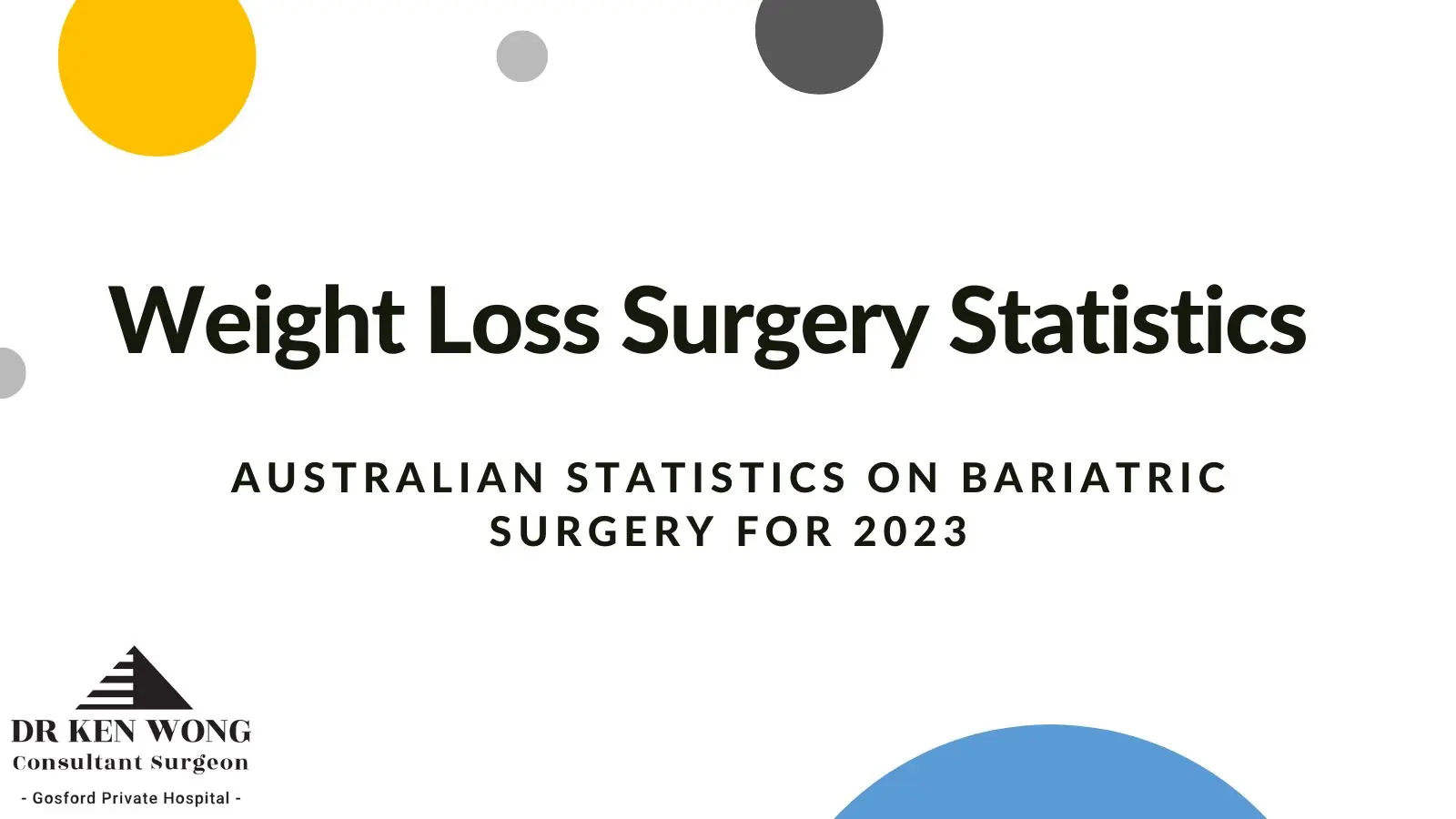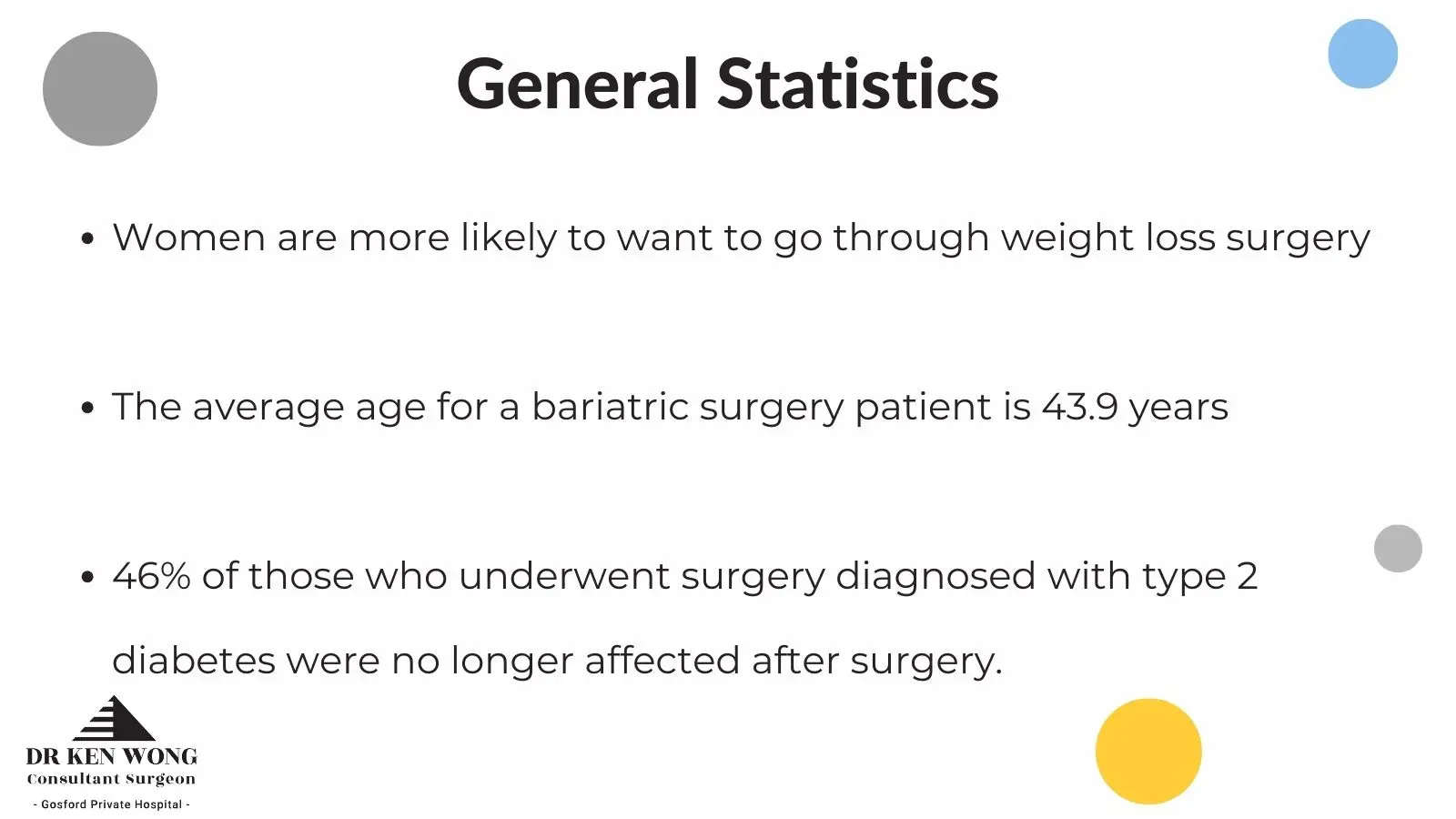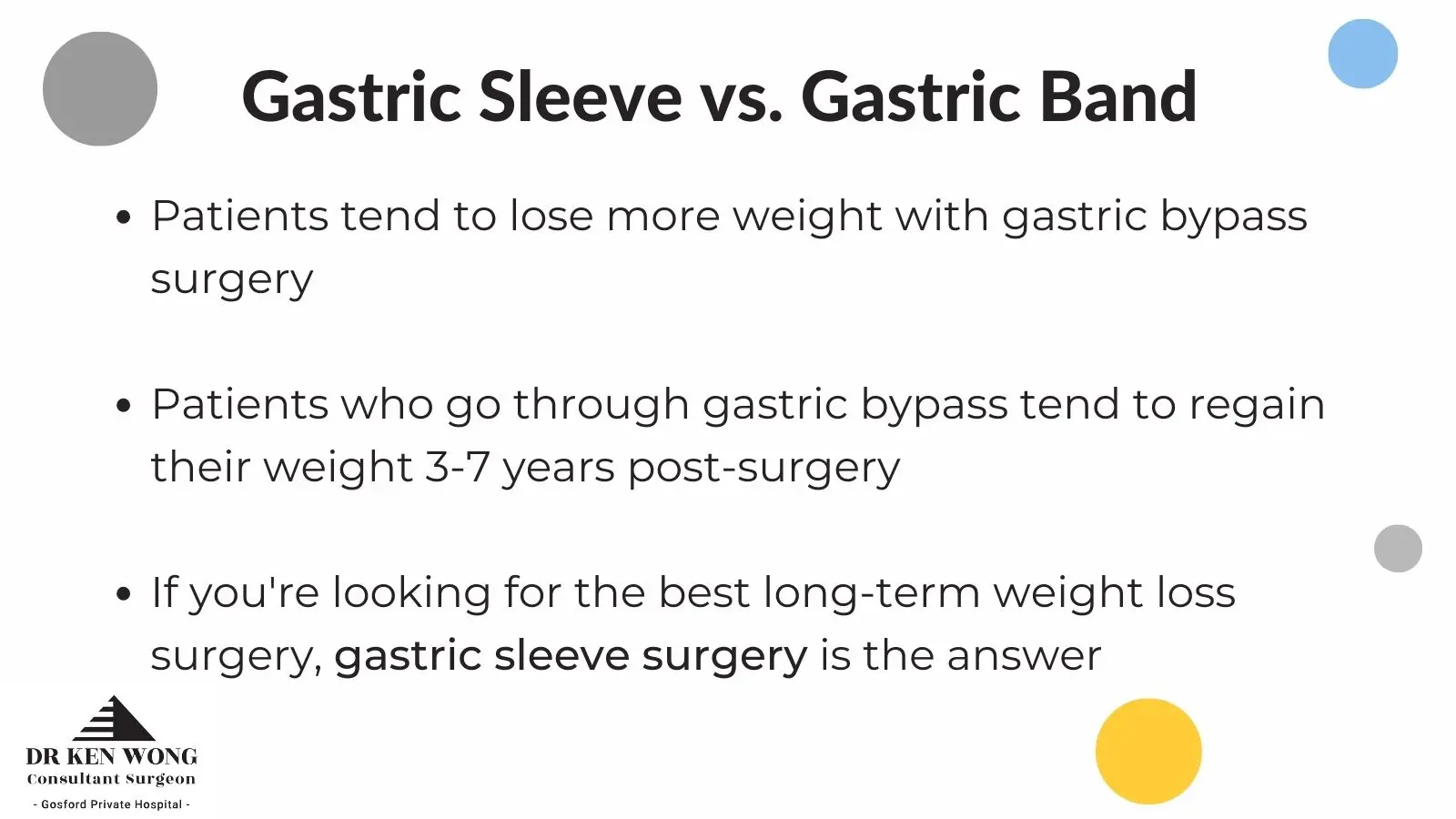
In a 2017-2018 National Health Survey, 67% of adults were affected by obesity in Australia — a 63.4% increase from the same survey conducted in 2014-2015. There’s no doubt about it - Australia is facing a huge obesity epidemic.
And with this epidemic, comes a wealth of new methods that are being adopted address weight gain, from lifestyle changes, to exercise regimes, to cosmetic procedures, and weight loss surgery.
Weight loss surgery has become more popular in the last 10 years, as we’ve made significant advancements in medical technology, awareness of bariatric surgery increases, and as more people are affected by severe weight gain than ever before.
Whether you’re considering weight loss surgery or in the bariatric field and want to get across the latest data, this article will provide a comprehensive list of relevant and insightful weight loss surgery statistics in Australia for 2023.
General Weight Loss Surgery Statistics
A larger percentage of individuals opting for weight loss surgery are women.
According to research carried out by the Bariatric Surgery Registry, 79% of those who underwent surgery were female.
The average bariatric surgery patient is 43.9 years old.
This average was taken only from patients who have undergone their “primary” or first-time procedure, not including those that have secondary or follow-up surgeries.
A secondary surgery after bariatric surgery is not typical, as the primary procedure will usually be sufficient to remove excess weight. However, if patients experience subsequent complications post-bariatric surgery, additional surgical interventions may be necessary to address these problems.
46% of those who underwent surgery diagnosed with type 2 diabetes were no longer affected after surgery.
The study conducted by the Bariatric Surgery Registry underscores this point, revealing that 46% of participants who reported having diabetes at the time of their primary bariatric procedure no longer had diabetes at their one-year follow-up.

Bariatric Surgery Hospital Admissions Statistics
Sleeve gastrectomy is the most common weight loss surgery in Australia.
According to the Bariatric Surgery Registry, gastric sleeve surgery currently accounts for 70.1% of all weight-loss surgeries, making it the most commonly performed procedure for addressing obesity in Australia.
Hospital admissions for bariatric surgery experienced a growth of 144%.
The number of admissions in 2005 to 2006 was 9,300. It has since increased to 22,713 in 2014-2015 (Study by Australian Institute of Health) and is likely to continue doing so. This upward trend might indicate that an increasing number of Australians are becoming aware of the health risks associated with obesity and are opting for interventions as a potential solution.
About 79% of the weight loss surgeries performed in 2014-15 were primary procedures.
The AIHW also reported that almost 5 out of every 5 procedures between 2014-2015 were the first time the patient had undergone that particular surgery type. This high percentage of primary procedures also suggests that more patients have had a succefull result and did not require subsequent procedures.
Weight Gain and Loss After Bariatric Surgery Statistics
Most patients experienced weight loss between 47% to 80% of their excess weight.
A study conducted by the the National Library of Medicine highlighted that the impact of bariatric surgery was substantial weight loss, with results typically falling within the range of 47% to 80% reduction in excess weight. It’s important to understand that excess weight is classified as above what's considered healthy, often measured using the body mass index (BMI), not the total body weight of the patient.
Patients can regain 15-25% of weight lost after bariatric surgery.
A 2013 study cited by Hindawi revealed that most patients will regain some of the weight lost after the initial procedure. While this may seem discouraging for some, this result is actually very normal. The body tends to naturally settle into a stable weight range after the initial post-surgery loss. In addition, this initial loss is very extreme, so the process can still be considered successful even if some weight is regained.
Bariatric surgery can be a launchpad toward maintaining a healthy body weight. For long-term weight loss, patients should rely on following prescribed dietary modifications and engaging in regular physical activity to sustain the results.
Gastric Sleeve vs. Gastric Band Statistics
On average, patients tend to lose more weight with gastric bypass surgery than laparoscopic gastric band surgery.
According to a study by the National Institutes of Health, gastric bypass patients lost 28.4% of their total body weight after surgery. In contrast, patients lost 14.9% of their total body weight after laparoscopic gastric band surgery.
While this distinction in weight loss outcome can make gastric bypass seem more favourable, both surgery types have their own pros and cons, as well as situational applications, with no clear “better option”.
Weight regain within the first 3-7 years is more common with gastric bypass than banding
3-7 years post-surgery, patients who had gastric bypass surgery regained more body weight as compared to, patients who had gastric band surgery.
Following the results of the study above, those who had gastric bypass surgery regained an average of 3.9% of their body weight, and participants who had gastric band surgery regained on average of 1.4% of their body weight.
Over time, gastric sleeve surgery generally leads to greater weight loss than gastric band surgery.
A 2012 study by Springer Link found that gastric band surgery resulted in an excess weight loss (EWL) of 33.9% after 6 months and 37.8% after a year. In comparison the EWL, for gastric sleeve surgery was found to be 50.6% after 6 months and 51.8%, after a year indicating that gastric sleeve procedures may lead to weight loss compared to gastric band surgeries.

Weight Loss Surgery Costs Statistics in Australia
Gastric sleeve costs — as well as gastric bypass costs — are estimated at around $20,000 per procedure for patients. But what about the hospitals where these procedures take place?
Well, in their weight loss surgery report, the AIHW revealed that:
- In 2007–08, the estimated total cost of hospital care for weight loss procedures was $108 million, split amongst 15,750 weight loss separations in the private sector and 1,230 in the public sector.
- Around 82% of surgeries were funded by private health insurance
- Approximately $15.2 million in benefits was paid through the Medicare Benefits Schedule.
- 90% of weight loss procedures took place in private hospitals
Final Thoughts on Weight Loss Surgery Statistics in 2023
And there you have it — all the weight loss surgery statistics you need to know in 2023.
With bariatric surgery emerging as a more accessible and popular choice promising positive outcomes for obesity and diabetes solutions management, coupled with the growing rate of obesity in our nation - more Australians continue to embrace surgical interventions to transform their physicality and well-being.
Whether you’re thinking of undergoing bariatric surgery or have undergone a procedure and are looking for insights into recovery, weight regain, or additional follow-up surgeries, Central Coast Surgery is here to help.
Our Central Coast clinic offers advanced and safe surgeries such as Newcastle gastric sleeve and gastric bypass. Contact us today to start your path to a healthier future, and don’t hesitate to reach out if require any clarification on what you can expect.
